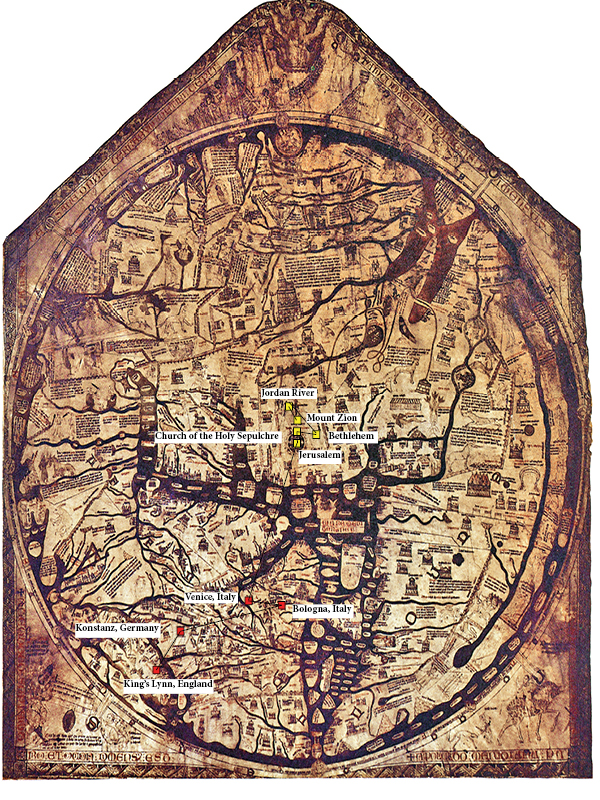When I transferred the points of Margery Kempe’s pilgrimage from a modern to a medieval map, I noticed several differences. Firstly, the modern map was interactive and highly detailed. Because it was online, I could locate very specific locations like Mount Zion or Bethlehem while also zooming out to see the route as a whole. This mapping feature is new within my lifetime, not just a change from the Middle Ages, and it has changed how we interact with maps in the present day. We no longer need to read maps, but can instead type city names into search bars. This made it much more difficult for me to locate places on the Hereford Mappa Mundi. Because it is a map of the entire world, the map lacks detail. What details it does have are very difficult for me to make sense of because even the highest quality images of the map do not preserve the writing very clearly. In addition, I do not read Middle English, and can barely decipher the writing anyway. Because of this, I had to use the basic shapes of places on the map to locate approximate points in Kempe’s pilgrimage.
The process of locating points by geographical shape was also complicated. Unlike the modern maps I am accustomed to, the Mappa Mundi places East at the top of the map, and centers on Jerusalem. This meant I had to reorient my thinking to make sense of the continental shapes. In addition, the continents are greatly compressed, and Africa is an entirely different shape than on a modern map. I found myself working in generalities, guessing the approximate locations of cities. I believe this relates to the medieval experience of travel. Although travellers like Kempe would not have been using maps like the Mappa Mundi for navigation, their knowledge of the terrain and routes of their travel would have been vague at best. Without detailed maps or GPS navigation, Medieval pilgrims would have most likely imagined the bird’s-eye view of their travel as a vague progress towards the Holy Land, if they imagined it at all.
Lastly, the T-O structure of the map, with Jerusalem at the center, reveals the centrality of the Jerusalem pilgrimage to Medieval Christian life. On the modern map, Kempe’s travels create a diagonal zig-zag across Europe and into the Middle East, proceeding down and to the right. On the Medieval map, however, she proceeds directly up to the center of the world. Her journey even appears straighter due to the slight squashing of the Mediterranean. Her journey becomes an ascent towards the walled heart of the world.
